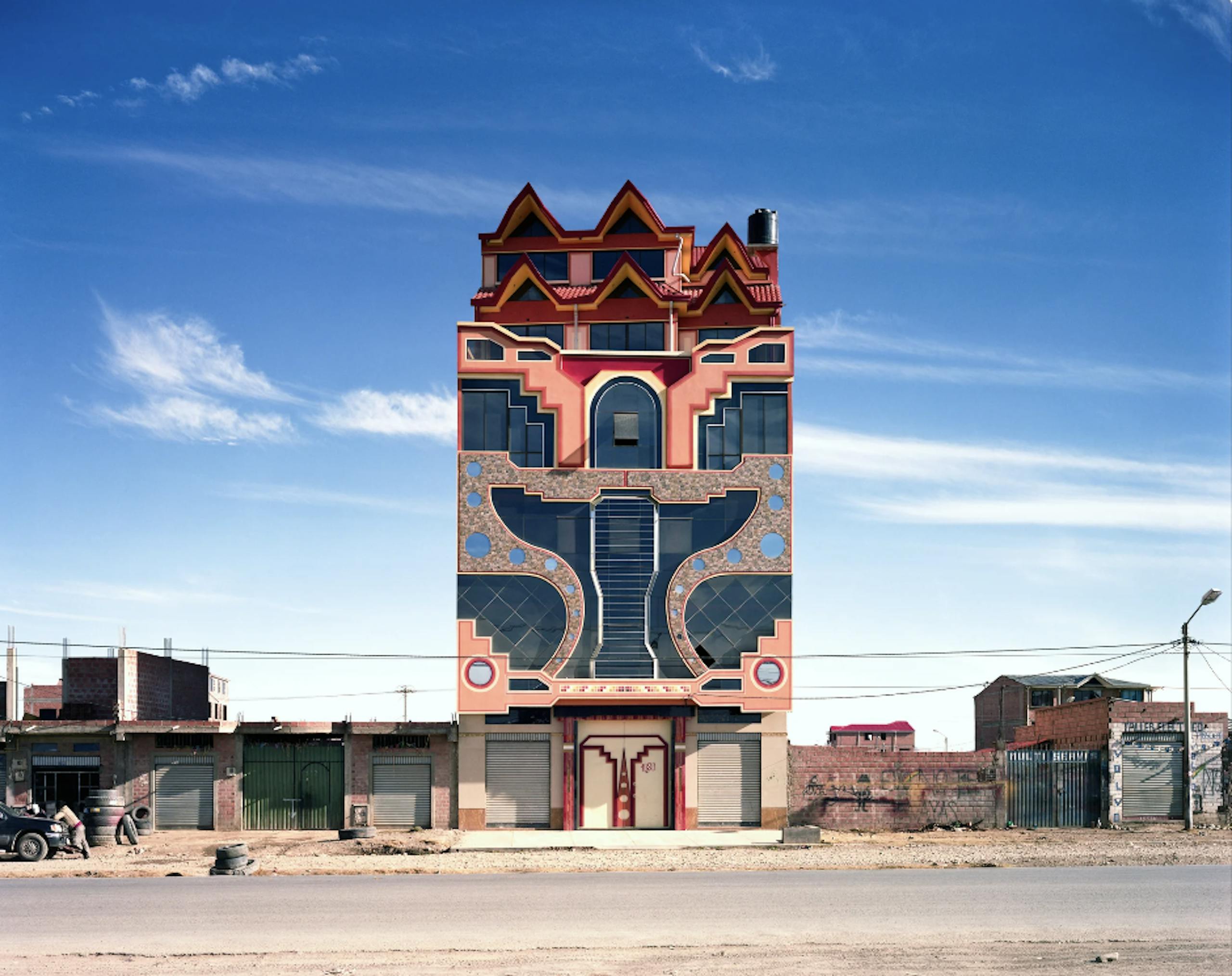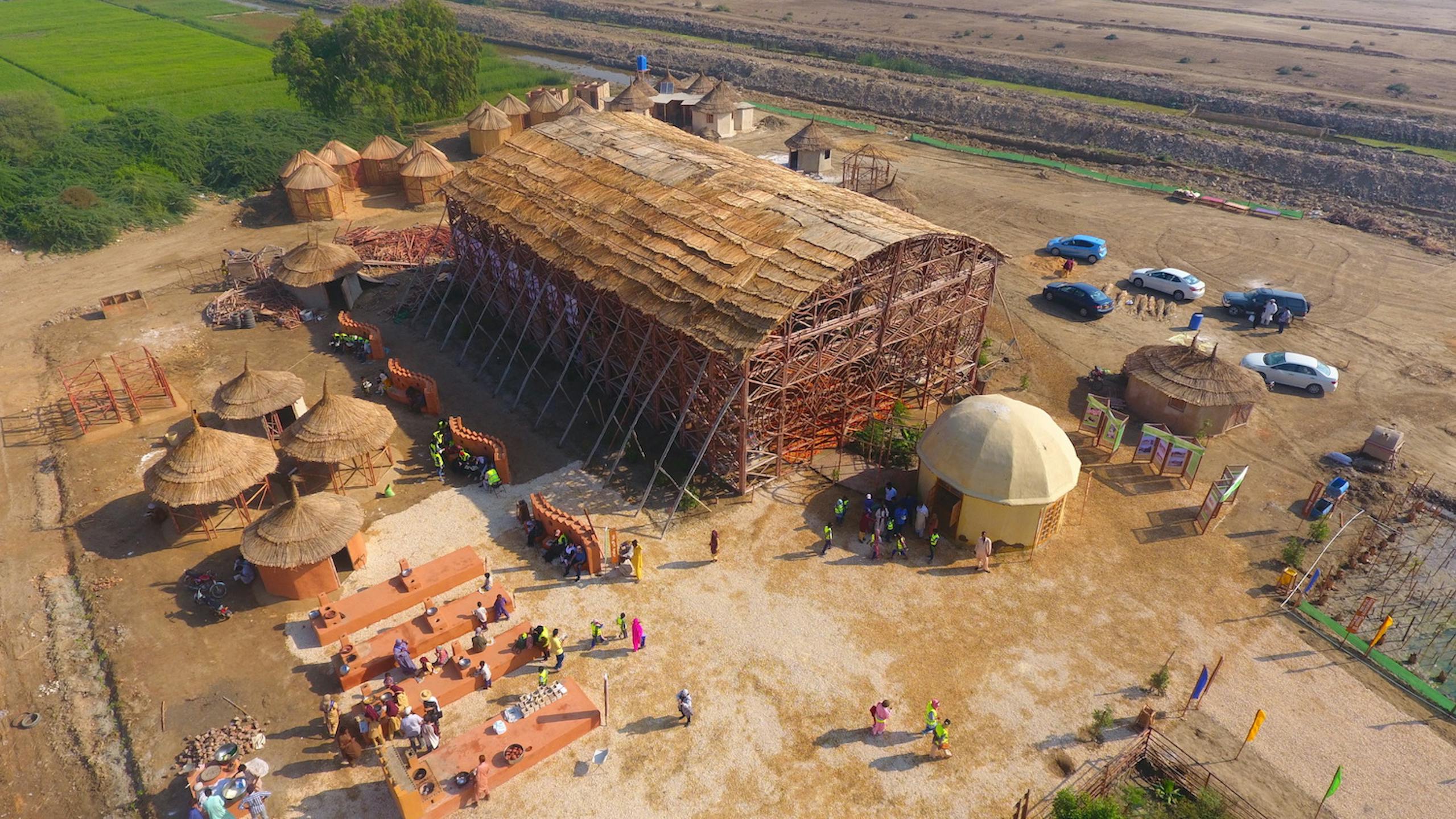
The World Around
In Focus: Radical Repair
September 28 2023, 4.00pm

Yasmeen Lari, Aerial Drone View of Zero Carbon Cultural Centre Makli, Courtesy of Heritage Foundation of Pakistan
Himalaya is a region like no other on the planet. Its mythological mountain ranges and its vast ice fields lie at the intersection of the most populated societies and nations on earth. This, our world’s Third Pole, arcs over India, Afghanistan, Pakistan and China, with over a billion people dependent upon its reservoirs for clean water. Yet, this very faultline in the Eurasian and Indian tectonic plates that bore the mountains and generated romantic stories for generations, are also the cause of some of the world’s most devastating humanitarian disasters, from flooding and droughts, to shattering earthquakes. These natural disasters and the consequent humanitarian crisis impacting amongst the world’s most vulnerable people is the concern of the most extraordinary people working in architecture today, Pakistani architect, historian and humanitarian, Dr. Yasmeen Lari.

OctaGreen Shelter Mirpurkhas, courtesy of Heritage Foundation of Pakistan
In a forthcoming program organized by The World Around and Fondation Cariter pour l’art contemporain, in collaboration with Triennale Milano this September, Lari will give a keynote address reflecting on the notion of Radical Repair. The event is curated to provoke and platform global practitioners whose careers and practice are dedicated to using design to radically improve standards of living and life. In a time when architecture is often complicit in forming and upholding social and ecological inequalities, the work of architects such as Lari provide immense leadership and guidance. What options do designers today have to address that are not high cost, high tech or high carbon? For Lari, who this year was awarded the RIBA Gold Medal for architecture, the answer is quite a lot.
Earlier in her career, Lari was primarily known in her native country as a successful practicing architect with an international reputation, building office towers, monuments and expansive villas in glass and concrete. But when a devastating earthquake in Kashmir in 2005 irrevocably altered the region, causing the death of more than 86,000 people and the displacement of close to 3.5 million, Lari began to pivot her approach towards architecture and use her skills in new ways.

OctaGreen Structure Residential Cottages, courtesy of Heritage Foundation of Pakistan
Following the quake, Lari traveled to Kashmir to help displaced people repair and rebuild their homes using mud, stone, wood and other debris. Since then, she has continued that work while training volunteers to reconstruct and repair in their communities; teaching women restoration craft skills; experimenting with low-cost, zero-carbon, zero-waste building materials and techniques; and always encouraging and empowering people to support themselves and their communities—not only as designers and architects, but as entrepreneurs.
The first and foremost strategy of Lari and her team is “humanistic humanitarianism”, a methodology to teach people to build themselves and do everything self-sufficiently, and then go on to teach others, for a small fee. Her motto is “zero carbon, zero waste, zero donor, which I think leads to zero poverty.” In the context of the climate emergency, much of the training is about disaster preparedness: how to build a stove that uses clean and safe energy for cooking even amidst a flooding catastrophe; methods of planting and storing food and water safely; designing and building hygienic bathrooms; strategies for how to create an emergency shelter. The system involves the teachers, very often women, being paid a very modest fee. In that way, the lessons can be afforded and they can share their knowledge, but primarily this means that they are not reliant on a form of capitalist philanthropy, and also that there is some form of financial prosperity embedded into the program.

OctaGreen Shelter Mirpurkhas, courtesy of Heritage Foundation of Pakistan
In a conversation with Alice Rawsthorn for her podcast Design Emergency, Lari said: “Disasters are constantly increasing in their severity. In Pakistan, just last year about 33 million people were displaced, and which means that something like 3 million households today are without shelter, without food, with literally nothing. And that is the tragedy of countries like ours, which are frontline states which suffer. And before we get the chance to have people come up to a certain level another disaster strikes. So almost every year we've been confronted with either an earthquake or a flood.”
Despite Lari’s background in the mainstream construction industry, the materials that she and her team use are anything but concrete and steel. Instead they primarily use bamboo, because it can be affordable for everyone. Lari spoke to Design Emergency about the beauty of transferable skills that she discovered in many of the women she teaches when using natural materials like mud, earth, lime and bamboo.

Pakistan Chulah, courtesy of Heritage Foundation of Pakistan
In Pakistan, the coming years are a source of great anxiety. As with many of the peoples in the Himalayas, they are observing the melting glaciers of the great range, the increasing number of extreme weather events, and the inevitable humanitarian disasters will inevitably appear in rapid succession. In this context, the answer is not found in repeating the mistakes of a post-colonial practice of funneling money or materials on a temporary basis. Lari’s version of radical repair is one of patience and care, and of the long-term empowerment that knowledge and economics can bring.

Front View of Zero Carbon Cultural Centre Makli, courtesy of Heritage Foundation of Pakistan
Credits
With thanks to Yasmeen Lari, The World Around, Fondation Cartier pour l’art contemporain, Triennale Milano and Design Emergency. Learn more about other practitioners who are using architecture and design to enact radical repair through their work by attending the In Focus: Radical Repair at Triennale Milano on Sept 28th or tuning in to the livestream.